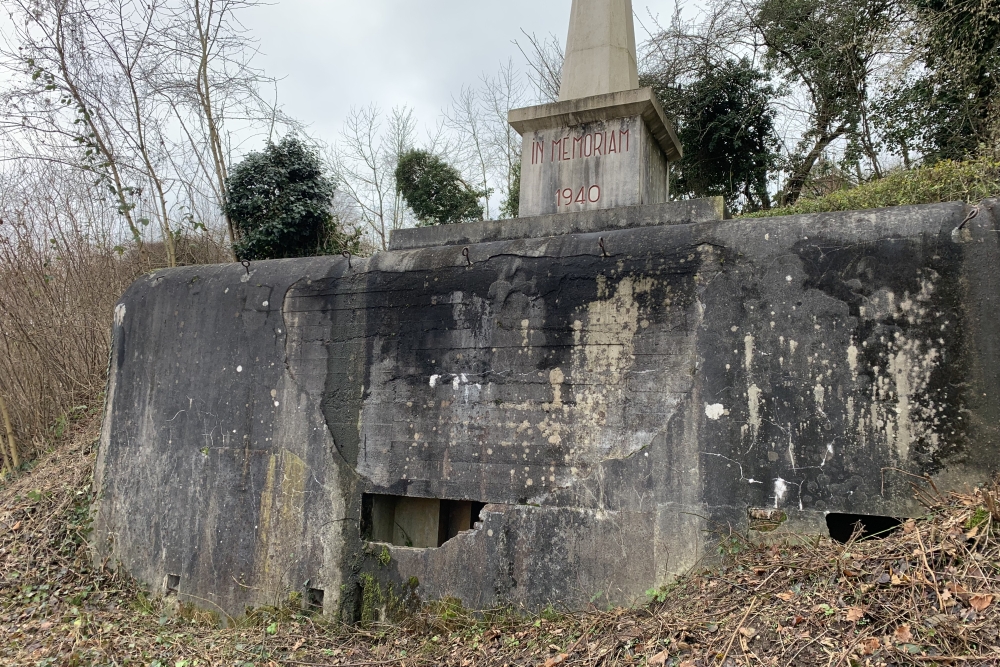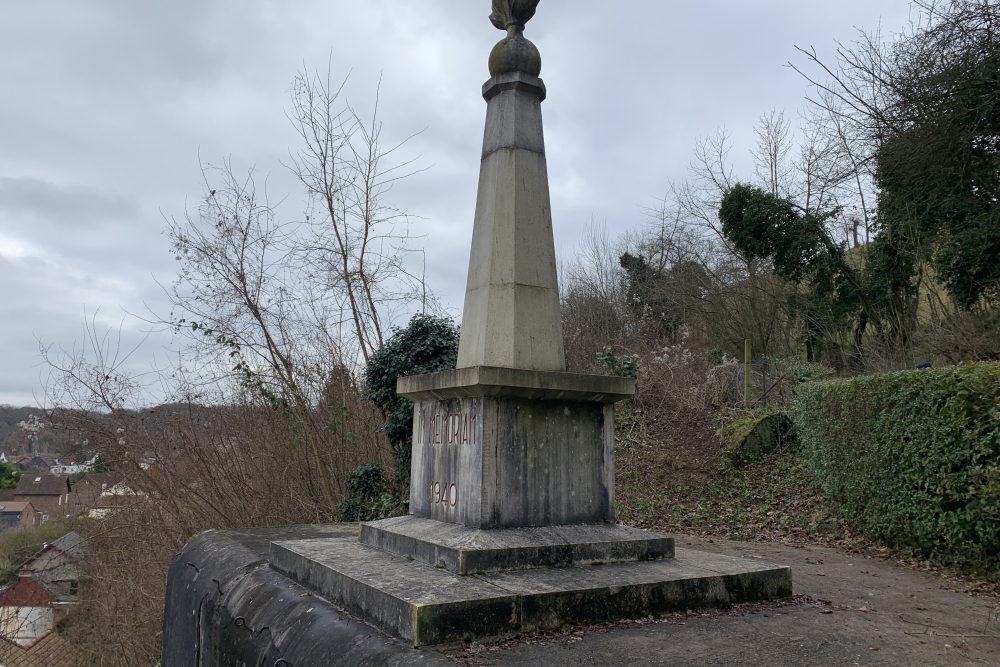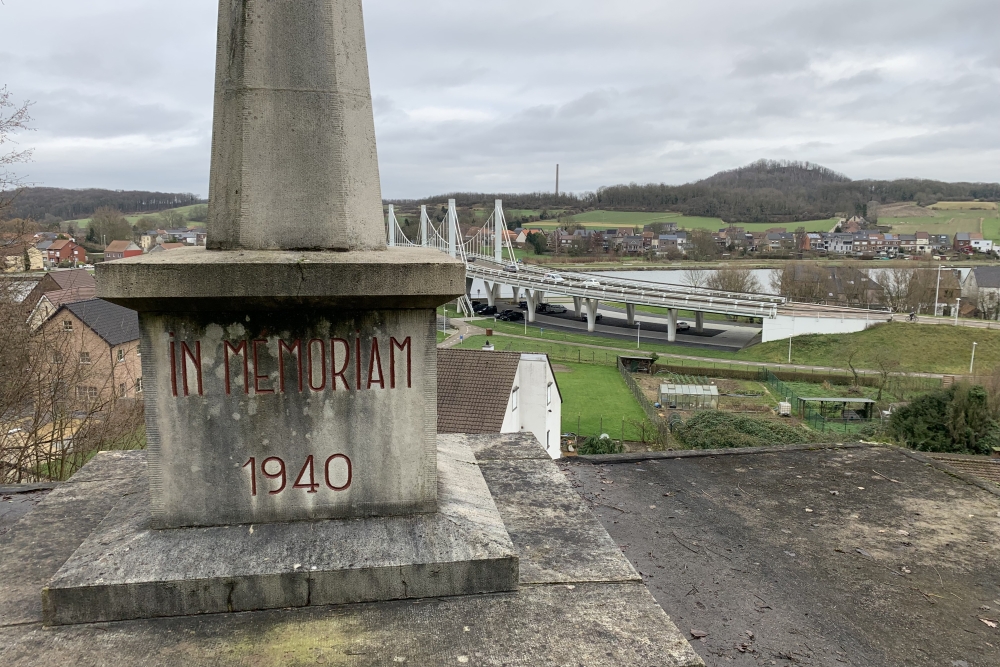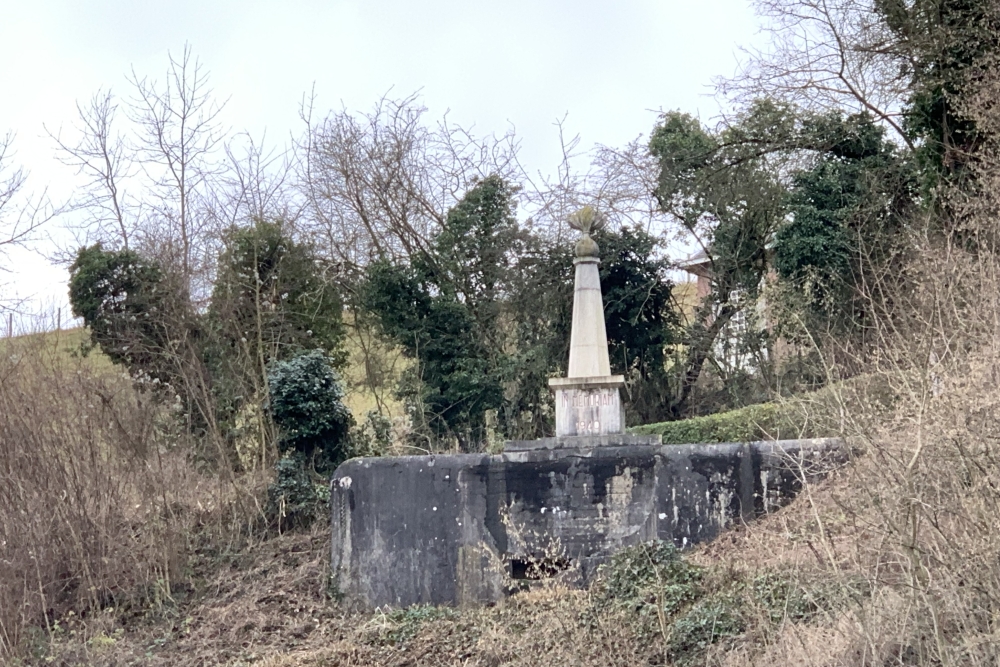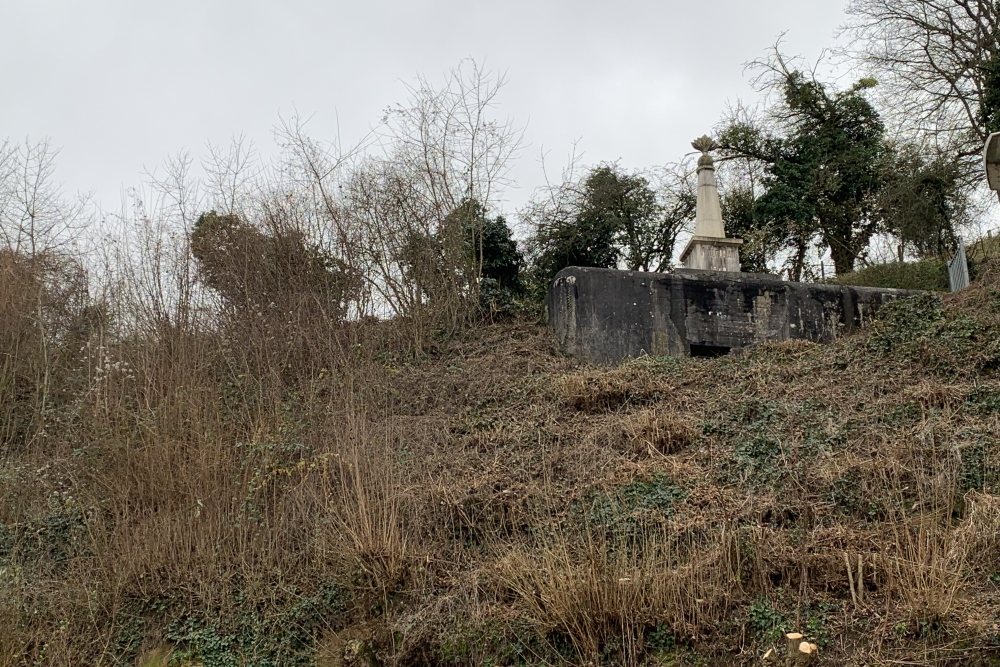Bunker O Kanne
This is bunker “O. The most northern bunker of the la Position Fortifiée de Liège and part of the 4th line of the PFL, the PFL-4.
Specifically, this was referred to as the 'Maastricht enclave' given the bunkers located here around the outer limits west of the city of Maastricht (NL) and runs from Lanaye (Ternaaien) to Maaseik.
From this point towards the north, the bunkers along the Albert Canal no longer fall under the PFL, but under the Albert Canal Defense Line with Lanaye-Briegden as the 1st sector.
The bunker is strategically located on higher surroundings with a good view of the Kanne bridge over the Albert Canal. It was also one of the fort's two observationbunkers located outside the Fort Eben-Emael and also guarded the bridge. Bunker O was observation post OP275. The other post, OP 271 was bunker PL 19 at Hallembaye, Of bunker PL 19, sector Pontisse-Lixhe No. 19, it is not certain if it still exists. It is located in an area for excavation of marl for the cement industry.
It is a larger type of bunker, manned by 3 NCOs and 9 soldiers. In addition to these two bunkers, the fort had 8 other observation posts, 3 of which were inside the fort itself. The other 5 were not bunkers but posts on strategically located, higher sites in the area.
From this bunker, the Kanne bridge was detonated on May 10th, 1940. The bridge had been previously undermined in case the enemy overran Fort Eben-Emael and the garrison stationed around Kanne. Orders were given from the fort in the early morning of May 10th to blow the bridge. Consequently, the bridge did not fall into German hands. Only after running out of ammunition in the afternoon of May 10th did the bunker's crew surrendered to the Germans.
The bunker has two gun openings, one for a 47 mm anti-tankgun (left opening) and one for a machinegun (right opening). Also, the bunker was equipped with a searchlight. The bunker was connected to the electricity network. Both gun openings were bricked up but later partially crumbled. The two square openings next to the gun opening were so-called shell gullys for close combat defense. If the enemy approached the bunker, handgrenades could be dropped from inside through a chute, which then fell outside to disable the enemy. The hooks at the top of the bunker were for attaching camflouganets.
As general information about the bunkers of the PFL can be mentioned that they were built in the age of 30. The walls and ceiling are of 1.30 m reinforced concrete and could withstand shells of 150mm. Only the rear side of the bunker was made of slightly less thick concrete, because few attacks with heavy caliber artillery were expected from that side.
In later years, a monument was placed on top of the bunker in memory of the battle and the fallen soldiers of the Regiment Fortifiée de Liège and the 2nd Grenadiers Regiment in and around Kanne on May 10, 1940. More than 100 soldiers of the 2nd Grenadiers Regiment lost their lives in the battle. They laid in the temporary cemetery a few 100 m from the bunker.
Do you have more information about this location? Inform us!
Source
- Text: Ed Lewandowski
- Photos: Ed Lewandowski
- La Position Fortifiée de Liege, Coenen & Vernier
- https://18daagseveldtocht.be
Nearby
Museum
- Fortress Eben-Emael - Eben-Emael (Bassenge)
- The Bridge of Vroenhoven - Vroenhoven (Riemst)
- Museum Maison du Souvenir - Hermalle-sous-Argenteau
Point of interest
- Reconstruction Death Wire Kanne - Kanne
- Water Mill of Eben Emael - Eben-Emael (Bassenge)
- Fortress Eben-Emael - Administration building - Eben-Emael (Bassenge)
Monument
- Former Belgian War Cemetery Kanne - Kanne (Riemst)
- Memorial Fallen Grenadiers - Eben-Emael - Eben-Emael (Bassenge)
- War Memorial Kanne - Kanne (Riemst)
Cemetery
- Belgian wargraves Kanne - Kanne (Riemst)
- Dutch War Grave Roman Catholic Cemetery Sint Pieter Maastricht - Maastricht
- Commonwealth War Graves General Cemetery Maastricht - Maastricht
Remembrance Stone
- Stumbling Stones Mergelweg 135 - Maastricht
- Stumbling Stones Mergelweg 129 - Maastricht
- Stumbling Stone Gronsvelderweg 81 - Maastricht
Fortification
- Trenches Grootberg - Kanne (Riemst)
- Fort Eben-Emael - Anti-tank Barrier - Eben-Emael (Bassenge)
- Destroyed False Turret Fort Eben-Emael - Eben-Emael (Bassenge)
